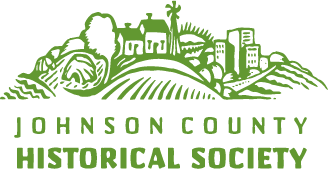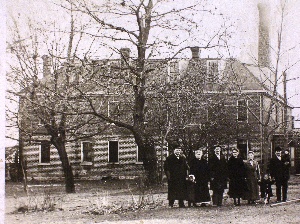Outreach
Traveling exhibits
JCHS has a number of traveling exhibits available for loan to other organizations. Short descriptions of each are listed below. For more information on how to host a traveling exhibit, please call (319) 351-5738 or email questions@johnsoncountyhistory.org
School Days: Stories of Johnson County One-room Schools
This table top exhibit explores the one-room school experience in Johnson County through excerpts from oral histories of Johnson County residents who attended or taught in one-room schools. The exhibit also features copies of photographs of and documents from several of Johnson County's over 100 one-room schools.
Meet Me at the Fair: Stories from the Johnson County Fair
The first Johnson County Fair was held on Capitol Square in 1853. This table top exhibit explores the history of the Johnson County Fair with copies of maps, photographs and documents. The exhibit also features excerpts from oral histories conducted with Johnson County residents sharing their memories of the Johnson County Fair.
Grist Mills of Johnson County
In the 1800s, flour or grist mills were an important industry in Johnson County. Farmers brought grain to the mills to be ground and sold Families, bakeries and restaurants depended on mills for flour. This exhibit explores the importance of this early industry in Johnson County and the history of a few of the mills. The exhibit consists of four 30" x 42" panels in barn board frames ready to hang.
Samuel J. Kirkwood: From Dusty Miller to Iowa's Civil War Governor
Samuel Kirkwood's first venture in Iowa was as part owner of a gristmill in Coralville. From there he went on to lead Iowa through the tumultuous period during the Civil War as Governor, serve as a U.S. Senator and as Secretary of the Interior in President Garfield's cabinet. This table top exhibit explores Samuel Kirkwood's life in Iowa through photographs and documents. A 15-minute DVD about Kirkwood narrated by Kirkwood Elementary students is also available to accompany the exhibit.
Taking Care of Our own: Images from the Johnson County Care Facility
In 1963, three University of Iowa students visited the Johnson County Care Facility in order to create a photographic essay of this community for an art class assignment. Fortunately, those students kept their photographs and today they document a page in the history of this unique community. These images freeze life within an institution and a community that many people in the past and present have never seen and don't know much about. The black and white photographs are framed and ready to be hung in a gallery space. Hosting institution may decide how many they would like to exhibit.
Goosetown: An Iowa Neighborhood
Goosetown was settled by Bohemian immigrants fro the 1850s until the time between the World Wars. Nicknamed "Goosetown" because the residents kept geese in their yards, it was an area of small, frame cottages with outbuildings, vineyards, and fenced gardens set back from unpaved streets by white picket fences. Today, many of the small homes remain. This exhibit explores the early history of the neighborhood through 19 photographs. The photographs are matted and framed and ready to be hung in a gallery space. A guide to the photographs accompanies the exhibit.
Johnson County Poor Farm and Asylum
At one time, county poor farms were common in the Midwest- almost every county in Iowa had one. The Johnson County Poor Farm and Asylum was established by the county supervisors in 1855 and was designed as a place to shelter the indigent and those deemed "insane." A two-wing structure housed people until 1886 when a larger facility was built. This table top exhibit explores the history of the Johnson County Poor Farm and Asylum using images and copies of documents.
On the Right Track: The Railroad in Johnson County
The first train came down the tracks into Iowa City on the last day of 1855 or the first day of 1856 (depending on whose watch you go by). Although the last passenger train came through Johnson County in the 1960s, freight train service remained an important part of the local economy. More recently, passenger trains might again roll through Johnson County. This table top exhibit explores the history of the railroad in Johnson County through images.
 Johnson County Historical Society: Bringing History Alive
Johnson County Historical Society: Bringing History Alive
Johnson County's history is rich with stories- stories the Johnson County Historical Society has been dedicated to preserving since 1973. Through images of JCHS sites and programs, this table top exhibit explores how JCHS works to bring to life the history of Johnson County Through interpreting historic sites, programs, exhibits and tours.
From Farm to Subdivision: An Iowa Story
Through the photographs of Iowa City photographer Ina Loewenberg, this exhibit looks at an Iowa that is changing from rural to urban by telling the story of the transformation of one piece of Johnson County from farmland to residential development. The land featured in Ina's photographs was purchased in 1856 by John and Mary Weno and farmed by the Weno family until 1995. The 20 photographs are matted and framed and ready to be hung in a gallery space.




